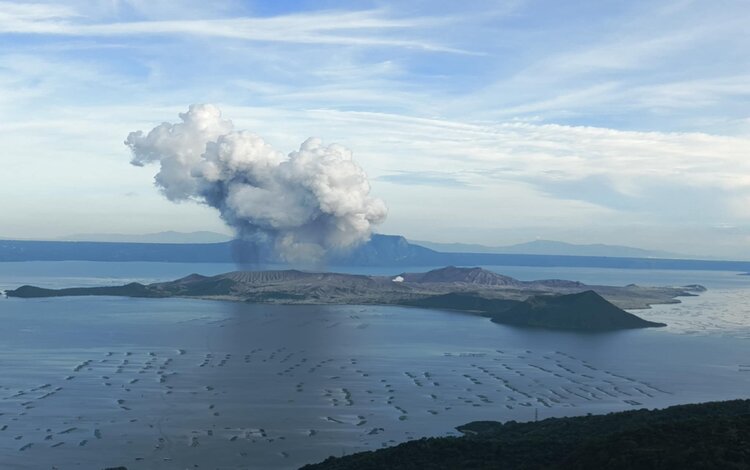The Philippine Institute of Volcanology and Seismology (Phivolcs) confirmed the eruption of Taal Volcano on Wednesday afternoon. In a brief advisory issued later that day, Phivolcs announced, “Ongoing eruption at Taal Volcano. Details to follow.” No immediate specifics were provided regarding the extent of the eruption or its potential impact.

Despite the eruption, the agency has maintained Alert Level 1 over Taal Volcano, signifying a low level of volcanic activity. According to Phivolcs, the situation remains under close observation. Residents and authorities have been urged to remain vigilant but were not advised to evacuate at this time. Phivolcs emphasized the need for preparedness, reminding the public that sudden steam-driven or phreatic explosions can still occur at Alert Level 1.
This recent eruption follows a series of volcanic activities recorded just a day prior. On Tuesday, Taal experienced five phreatic eruptions — steam-driven explosions caused by the interaction of water and magma — as well as six volcanic tremors. These tremors lasted for up to 10 minutes each, highlighting the volcano’s ongoing unrest.
Taal Volcano, situated in Batangas province, is one of the most active volcanoes in the Philippines. Its location within a large lake adds complexity to monitoring its activity, as phreatomagmatic eruptions can easily occur when magma comes into contact with water. Such eruptions can produce ash plumes and pyroclastic flows, which are dangerous to nearby residents and livestock.
The province of Batangas, including towns surrounding Taal Lake, is particularly vulnerable to the effects of the volcano’s activity. Previous eruptions have caused widespread ashfall, affecting agriculture, infrastructure, and air quality in surrounding areas.
Local governments are working closely with Phivolcs to ensure timely updates and measures. In the meantime, residents in the vicinity are advised to stay informed through official channels and avoid venturing near the Taal Volcano Island, which is considered a permanent danger zone.
The situation is evolving, and Phivolcs is expected to release more information as they continue to monitor the volcano’s activity. The public is urged to exercise caution and heed all advisories.
